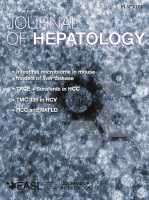Hepatology:CXCL5介导中性粒细胞浸润促进肝癌转移
2012-07-02 Beyond 生物谷
趋化因子是能使细胞发生趋化运动的小分子细胞因子,分子量多在8-14kDa之间。趋化因子与趋化因子受体结合后传递多种细胞信息。CXCL5是一个小分子类型的分泌蛋白,属于趋型趋化因子家族成员。近来,CXCL5与癌症发生发展的相关证据已经有很多。 最近,为了研究CXCL5在肝细胞癌的生长、侵袭和预后中的作用,研究人员研究了具有不同转移性能的人肝癌细胞系以及919例肝癌患者中CXCL5的mRNA和蛋白水
趋化因子是能使细胞发生趋化运动的小分子细胞因子,分子量多在8-14kDa之间。趋化因子与趋化因子受体结合后传递多种细胞信息。CXCL5是一个小分子类型的分泌蛋白,属于趋型趋化因子家族成员。近来,CXCL5与癌症发生发展的相关证据已经有很多。
最近,为了研究CXCL5在肝细胞癌的生长、侵袭和预后中的作用,研究人员研究了具有不同转移性能的人肝癌细胞系以及919例肝癌患者中CXCL5的mRNA和蛋白水平。
结果发现在高转移人肝癌细胞系中,CXCL5表达水平增加,与对照组相比,复发性肝癌患者的肿瘤组织中,CXCL5表达水平也增加。
CXCL5 激活肝癌细胞的PI3K-AKT和ERK1/2信号通路,促进肿瘤增殖、迁移和侵袭。此外,在体外研究中,CXCL5对中性粒细胞有直接趋化作用。在动物实验中,肝癌细胞中CXCL5的上调促进肿瘤细胞的生长以及肺转移,瘤内中性粒细胞浸润数目也增加。
相反,肝癌细胞的CXCL5表达被下调后,肿瘤生长被抑制,肺转移和肿瘤组织中性粒细胞浸润数量都减少。肝癌样本中免疫组化分析表明,瘤组织中CXCL5的过度表达与中性粒细胞的浸润、患者总生存期短以及肿瘤患者的复发相关。多变量分析显示,CXCL5过表达或与瘤内中性粒细胞同时存在,都是一个独立的整体生存和癌症复发预后指标。该研究的结论就是CXCL5促进肝癌细胞增殖、侵袭,促进瘤内中性粒细胞的浸润。

doi:10.1002/hep.25907
PMC:
PMID:
Overexpression of CXCL5 mediates neutrophil infiltration and indicates poor prognosis for hepatocellular carcinoma.
Zhou SL, Dai Z, Zhou ZJ, Wang XY, Yang GH, Wang Z, Huang XW, Fan J, Zhou J.
CXCL5 (epithelial neutrophil-activating peptide-78) is a member of a proangiogenic subgroup of the CXC-type chemokine family of small, secreted proteins. Recently, evidence that CXCL5 is involved in carcinogenesis and cancer progression has emerged. To investigate the role of CXCL5 in tumor growth, invasion, and prognosis of hepatocellular carcinoma (HCC), we examined CXCL5 mRNA and protein levels in HCC cell lines with various metastatic potentials and in three independent cohorts of 919 HCC patients. We found that CXCL5 expression was increased in the highly metastatic HCC cell lines and in tumor tissues from patients with recurrent HCC compared to controls. CXCL5 activated the PI3K-Akt and ERK1/2 signaling pathways in HCC cells and promoted proliferation, migration, and invasion. Furthermore, we found that CXCL5 had a direct chemoattractant effect on neutrophils in vitro. In animal studies, the up-regulation of CXCL5 in HCC cells promoted tumor growth, lung metastasis, and intratumoral neutrophil infiltration. Conversely, down-regulation of CXCL5 in HCC cells reduced tumor growth, metastasis, and intratumoral neutrophil infiltration. Immunohistochemical analysis in HCC samples showed that overexpression of CXCL5 was well correlated with intratumoral neutrophil infiltration, shorter overall survival, and tumor recurrence. Multivariate analysis revealed that CXCL5 overexpression alone, or combined with the presence of intratumoral neutrophils, was an independent prognostic indicator for overall survival and cumulative recurrence. CONCLUSION: CXCL5 promotes HCC cell proliferation, invasion, and intratumoral neutrophil infiltration. CXCL5 overexpression, alone or combined with intratumoral neutrophil presence, is a novel prognostic predictor, and CXCL5 is a potential therapeutic target for HCC. (HEPATOLOGY 2012.).
本网站所有内容来源注明为“梅斯医学”或“MedSci原创”的文字、图片和音视频资料,版权均属于梅斯医学所有。非经授权,任何媒体、网站或个人不得转载,授权转载时须注明来源为“梅斯医学”。其它来源的文章系转载文章,或“梅斯号”自媒体发布的文章,仅系出于传递更多信息之目的,本站仅负责审核内容合规,其内容不代表本站立场,本站不负责内容的准确性和版权。如果存在侵权、或不希望被转载的媒体或个人可与我们联系,我们将立即进行删除处理。
在此留言









#CXCL5#
66
#中性粒细胞浸润#
77
#中性粒细胞#
74
#EPA#
60
#癌转移#
0